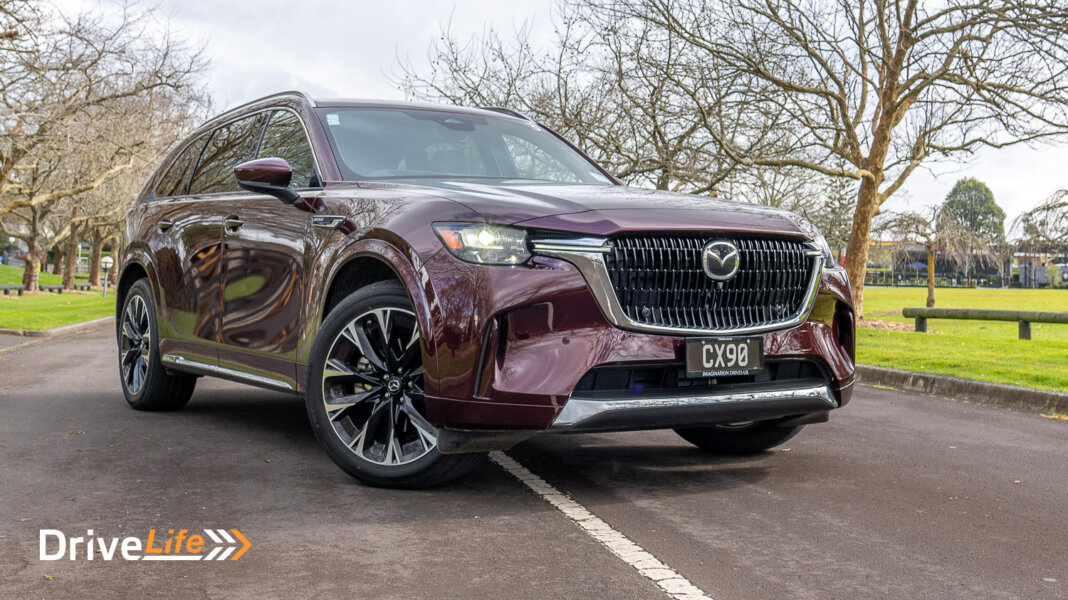We love Mazda cars here at DriveLife; they are extremely well made, look fantastic, and the driving dynamics of each model border on outstanding.
Mazda’s SUV range had an easy naming convention with models like the CX-3, CX-5, CX7, CX-9. Then came along the CX-30, throwing a spanner in the works and this happens again today with the launch of the all-new CX-60 and CX-90 models. The CX-90 will replace the CX-9 when the supply of that model runs dry this year.
I think the most mind-blowing part of the announcement of the CX-60 and CX-90 models is the all-new six-cylinder engines. While a straight-six engine is inherently smooth, they are physically a long motor and there aren’t many of them left available, with these mainly in high-end euro cars like the Mercedes-Benz S Class. It’s almost a brave move by Mazda to introduce such an engine, but we have high expectations that it’s going to be a superb powertrain.
While other countries get the option of a straight-six diesel or petrol engine, New Zealand will see only the 3.3-litre straight-six petrol engine with 48-volt mild-hybrid operation. There’s also a 2.5-litre, four-cylinder petrol engine option with plug-in hybrid capability (PHEV), a first for Mazda.
DriveLife headed to Auckland to check the new models out and spend some time behind the wheel.
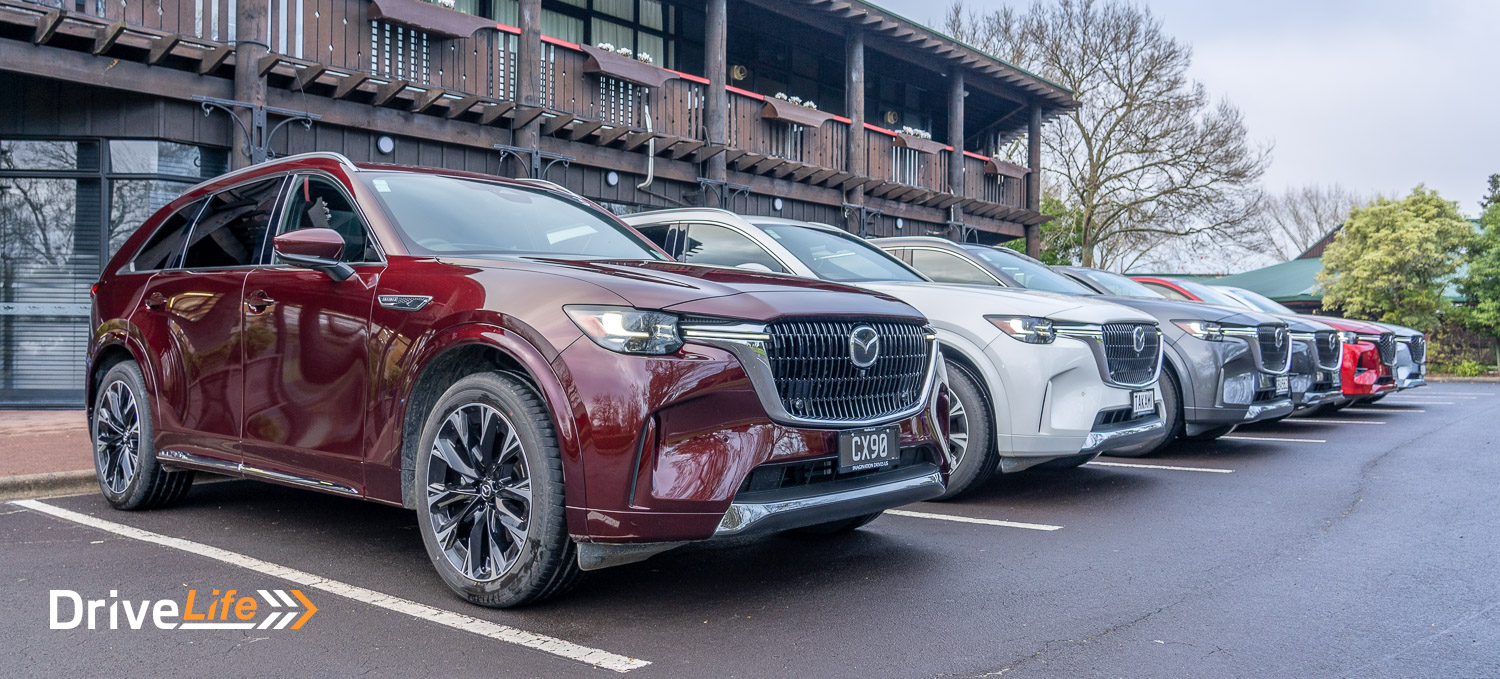
2023 MAZDA CX-60/CX-90
According to David Hodge, Mazda New Zealand Managing Director, the CX-60 is “Mazda’s most important new model” and “an evolutionary step in Mazda’s journey”. Mazda is placing huge importance on the CX-60. It’s the company’s first model ever available as a plug-in hybrid electric vehicle (PHEV), and they are expecting it to be the company’s top-selling model, moving the much-loved and respected CX-5 aside from that title.
And let’s not forget the CX-90, which David says is now Mazda’s flagship vehicle. The CX-60 and CX-90 are both built on the same Large Platform, but that platform is stretched for the CX-90, giving it a long wheelbase of 3.1 metres. While the CX-90 is similar in size but larger than the CX-9, the CX-60 is between the CX-5 and CX-8 in size, although it will stand alone as a model and will not replace the CX-5. The diesel-powered CX-8 will also continue on.
Both CX-60 and CX-90 models sold in New Zealand will be all-wheel drive. While New Zealand will see three models of CX-60, Mazda has made the decision to only sell the top-spec CX-90 Takami model, and even then only with the all-new 3.3-litre straight-six petrol engine – so no 2.5-litre, 4-cylinder PHEV option.
Both the CX-60 and CX-90 are built on Mazda’s new Large Platform, with one of the results of the engineering of this platform resulting in 50/50 weight distribution for the SUVs, for better and more predictable handling characteristics.
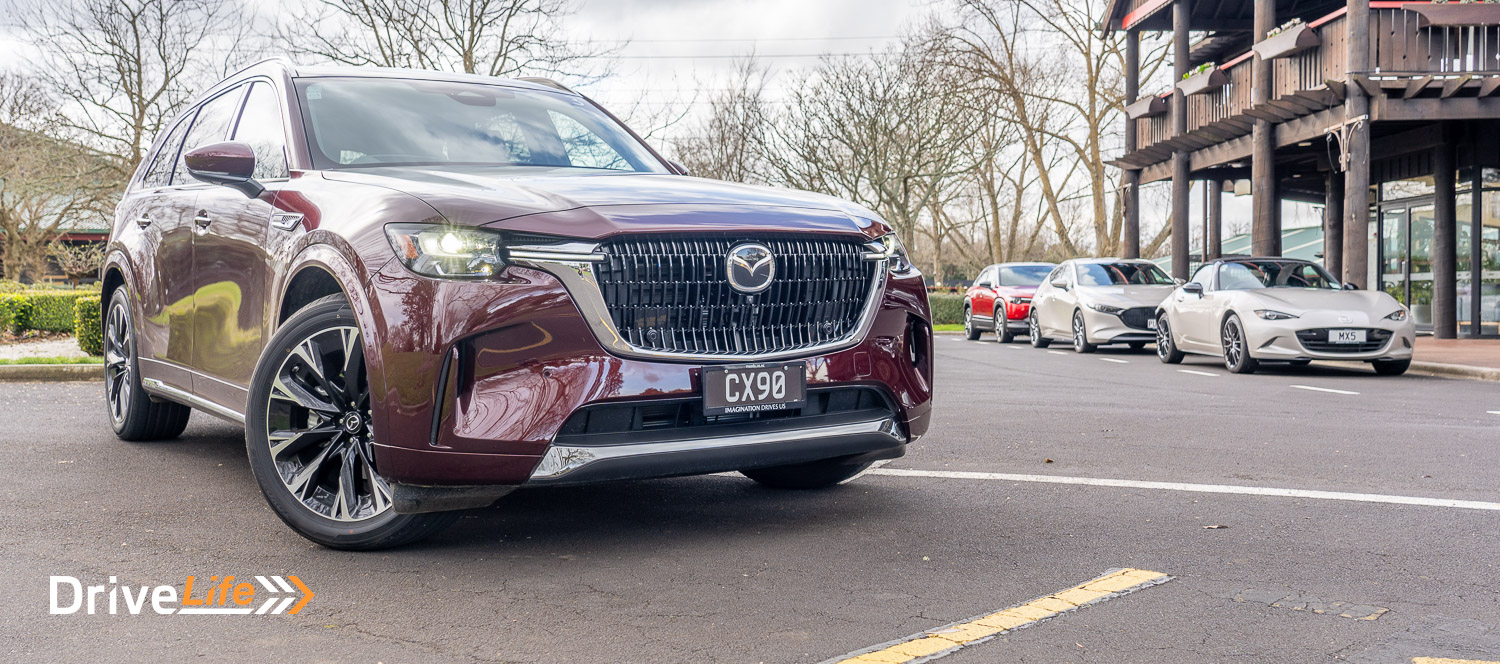
2023 MAZDA CX-60/CX-90 – Models
The model offering looks like this:
- CX-60 Touring PHEV $78,990
- CX-60 Homura 3.3 M Hybrid $81,990
- CX-60 Homura PHEV $87,990
- CX-60 Takami PHEV $90,990
- CX-90 Takami 3.3 M Hybrid $92,990
The CX-Touring PHEV model is eligible for a clean car rebate of $4,025, the other CX-60 PHEV models have no rebate or fees, while the six-cylinder CX-60 or CX-90 attracts a $4,025 fee.
Mazda is clear that we shouldn’t consider the CX-60 Touring as a ‘base’ model, and the equipment levels prove this. As standard, it comes with features such as SatNav, Qi wireless charging, a 12.3” centre screen, leather seats, powered front seats, a 360-degree camera system, adaptive cruise control, keyless entry and start, and a plethora of driver safety assistance systems and aids.
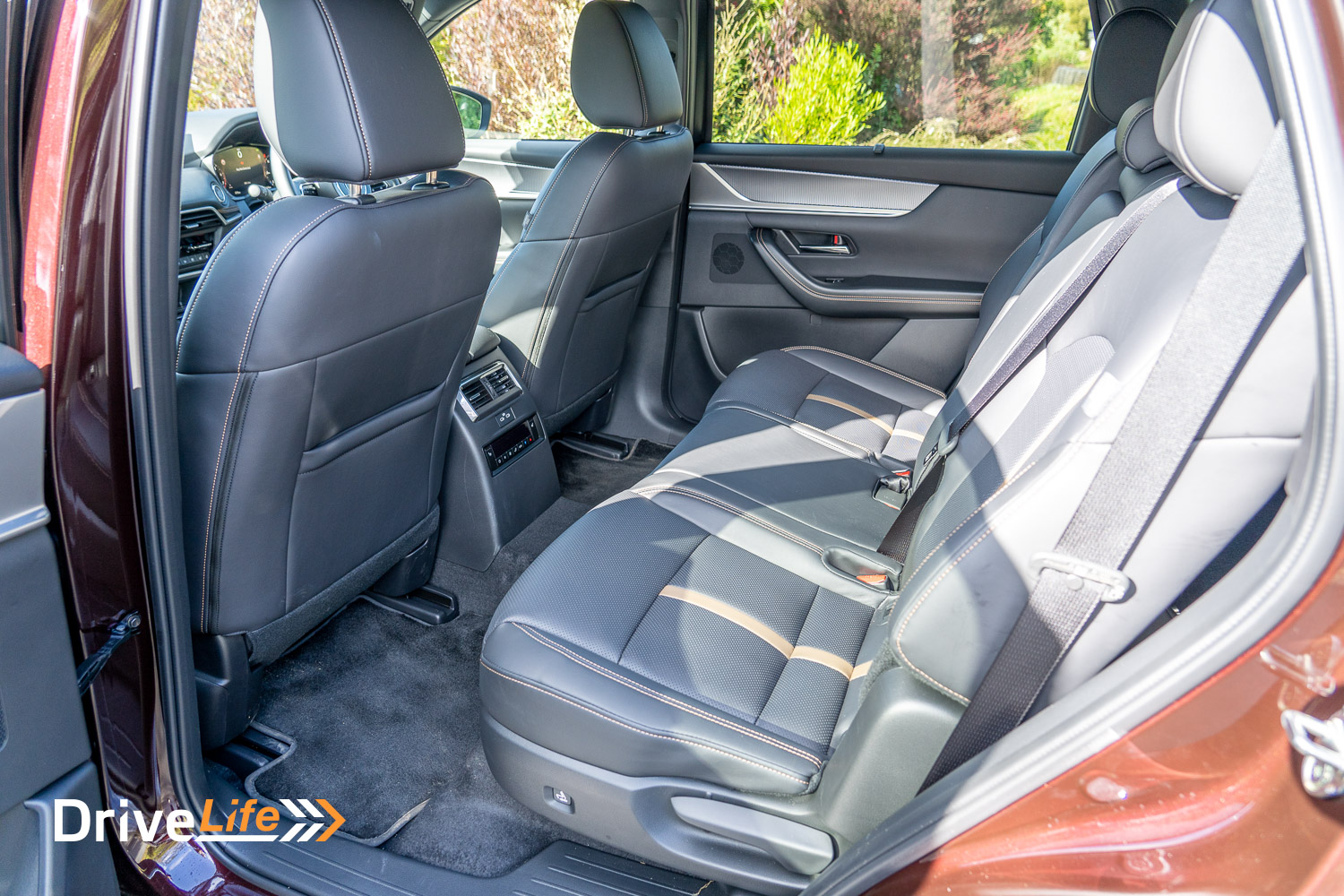
The CX-60 Homura PHEV is the sweet spot in the model range, says Mazda, and is the hero model for low CO2 emissions and performance. It’s a key model for delivery of Mazda CX60 volume and includes features like heated rear seats and a power-adjustable steering wheel.
The CX-60 Takami is of course the flagship model in the CX-60 range, and David states that it is a “brand and positioning statement, and speaks to Mazda Premium”, while the CX-90 Takami is definitely Mazda’s flagship model, and “a no-compromise, 7-seat, large SUV” says David.
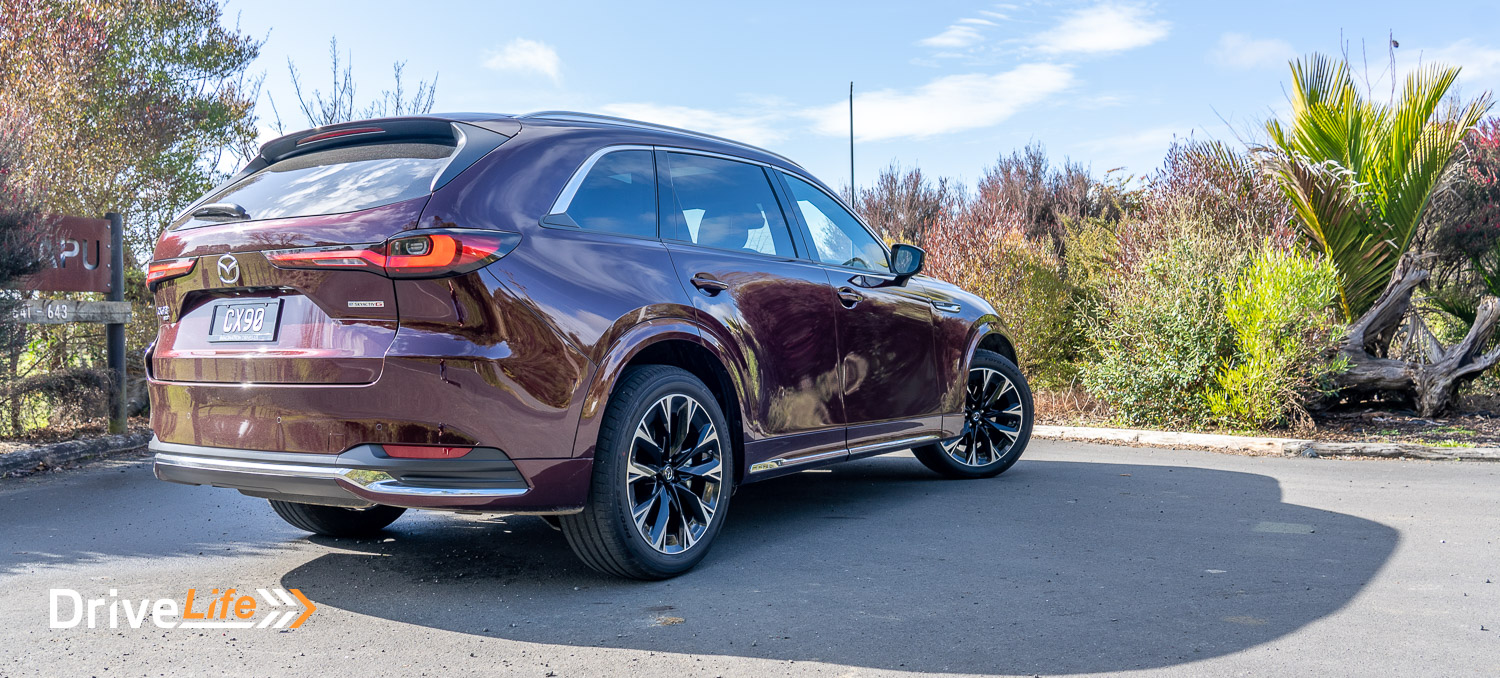
2023 Mazda CX-60 PHEV
The WLTP rating for Mazda’s first PHEV is up to 63km on a single charge, meaning that most New Zealand drivers’ daily motoring needs should be covered using electric power only. There’s one drawback here; the CX-60 PHEV models are AC charging only, meaning you can’t utilise a tethered DC public charger such as those operated by companies like Chargenet. Overnight charging at home will be easy; with a 17.8kWh battery, this should comfortably charge overnight on a standard power point. Thankfully, Mazda is using a Type 2 socket on their car, which is the most commonly used.
The engine on this model is Mazda’s 2.5-litre petrol engine, but sans turbocharger such as the CX-9 has. Combined with the electric side of things, the power output is a healthy 241kW and torque is listed at 500Nm, so no turbo is required. Mazda states the CX-60 models with the PHEV powertrain should return 2.3L/100km.
The CX-60 PHEV is rated to tow up to 2,500kg (braked).
2023 Mazda CX-60/CX-90 3.3 M Hybrid
The big news around this car will still be that all-new 3.3-litre inline-six petrol engine. Mazda has gone a different route to other brands and has decided that having an engine inline means fewer complications at the front of the car to allow for a transverse engine. Actually, the PHEV models of CX-60 also have their four-cylinder engine running north/south in the car, instead of transversely.
In the CX-60, this engine develops 209kW of power and 450Nm of torque, while in the CX-90 it’s rated at 254/500, with peak torque delivered at just 2,000rpm. This engine will run on 91-octane petrol, while the PHEV models will need 95-octane or higher.
The CX-60 with this engine uses fuel at 8.1L/100km, while the CX-90 3.3 will use 9.1L/100km. For those that tow, both models with the 3.3 are rated at 2,500kg (braked).
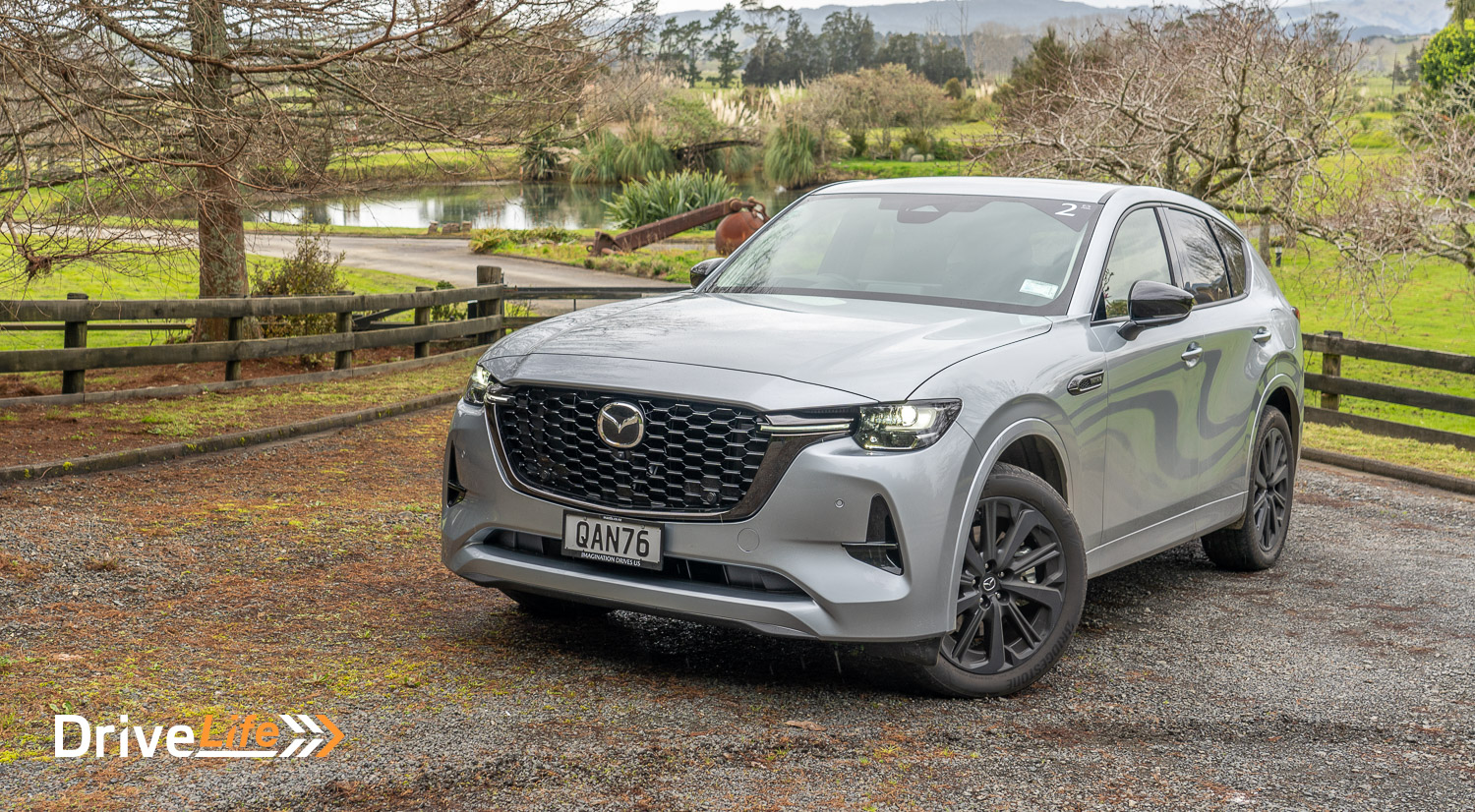
2023 Mazda CX-60/CX-90 No Torque Converter Automatic Transmission
Another common component across all CX-60 and CX-90 models is Mazda’s all-new 8-speed automatic transmission that has no torque converter but isn’t a dual-clutch (DCT) automatic. It still uses two clutches to take the place of the torque converter, but it isn’t a manual gearbox with two clutches, as most DCT gearboxes are. Mazda claims their new automatic reduces the length of the transmission since there’s no torque converter (meaning more room in the footwells), and also increases the transmission’s efficiency by 22%.
Another difference in the automatic transmission is the addition of an electric motor at the front of the gearbox. The two clutches in the transmission work independently in operation with that electric motor, depending on what is happening at the time, for example, if the car is starting, accelerating etc.

All CX-60 and CX-90 come with MazdaCare, meaning a 5-year warranty, 5 years of roadside assistance and 5 years of scheduled servicing.
The CX-60 has received a 5-star Euro safety rating and a 5-star ANCAP rating, while the CX-90 has yet to be tested.
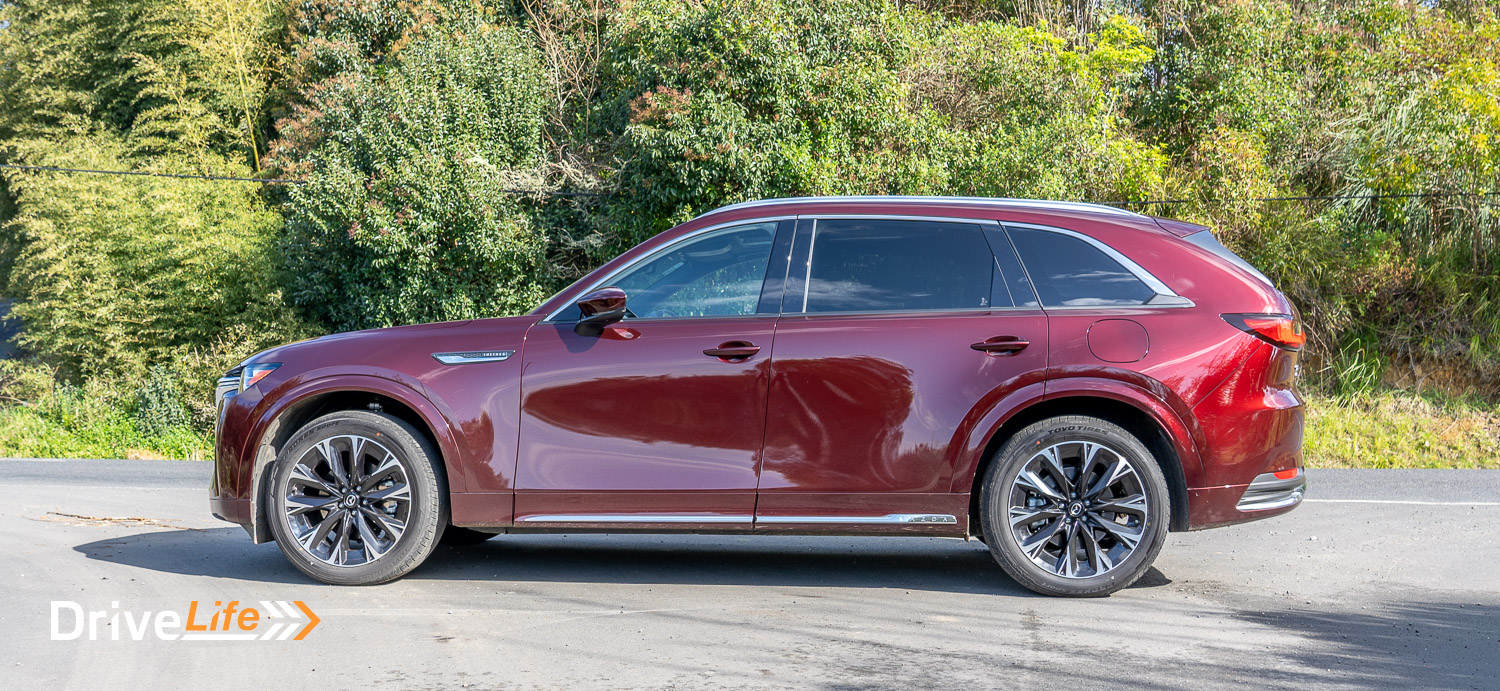
2023 Mazda CX-60/CX-90 – Drive Time
According to Mazda, “Every Mazda is engineered to a feeling”. Can this apply to the first car I drive, the CX-90 Takami weighing in at a hefty 2,220kg?
Looking at the CX-90, it’s a striking design with definite signs of Mazda’s design language, but with a few modern twists here and there. It’s a good-looking SUV, no doubt. Those 21” alloy wheels on the CX-90 Takami really set the car off.
All CX-90s are seven-seaters, and even with that third row up there is still a very reasonable 207 litres of space. Rear legroom is good too, as it should be; this is a large SUV, after all.
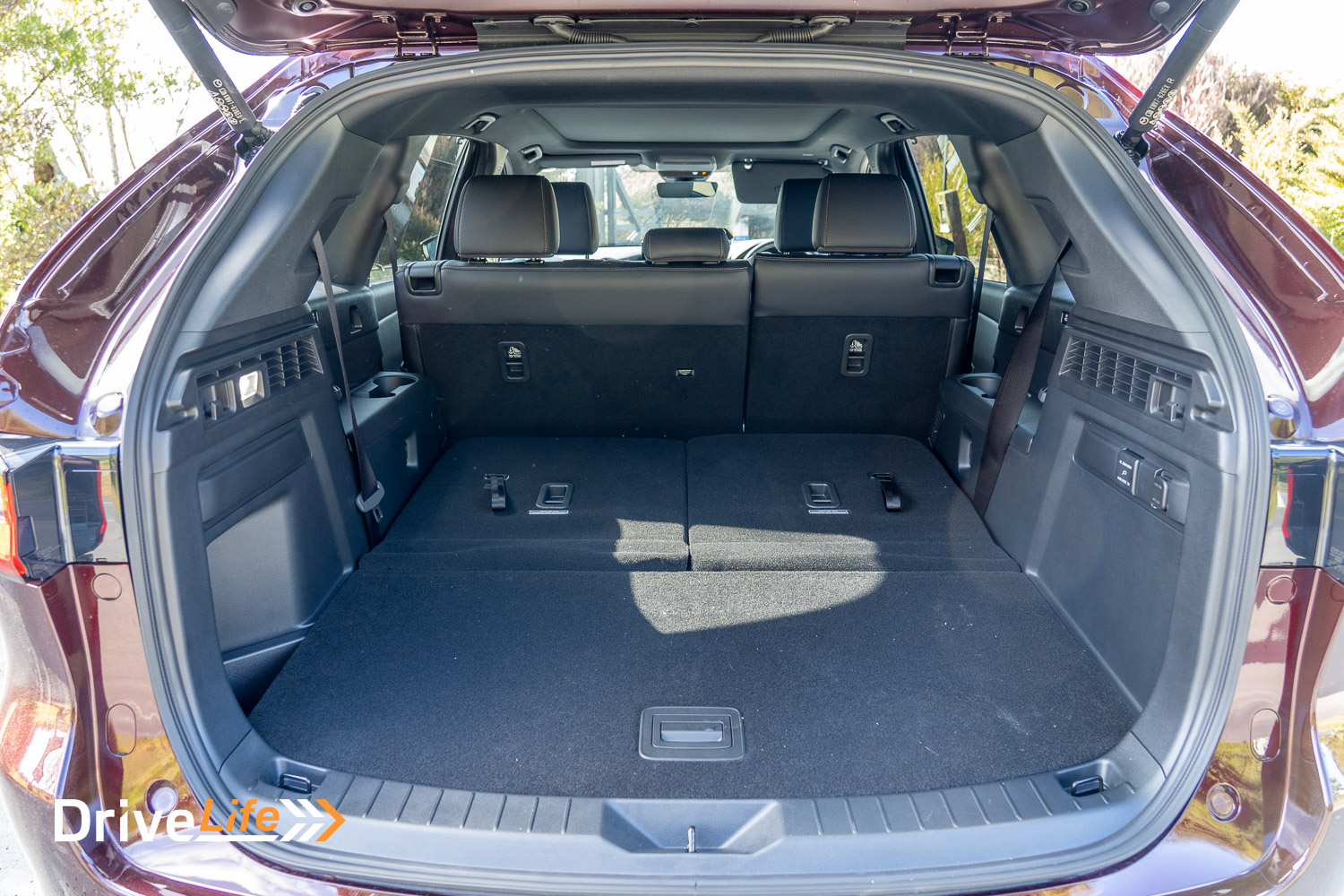
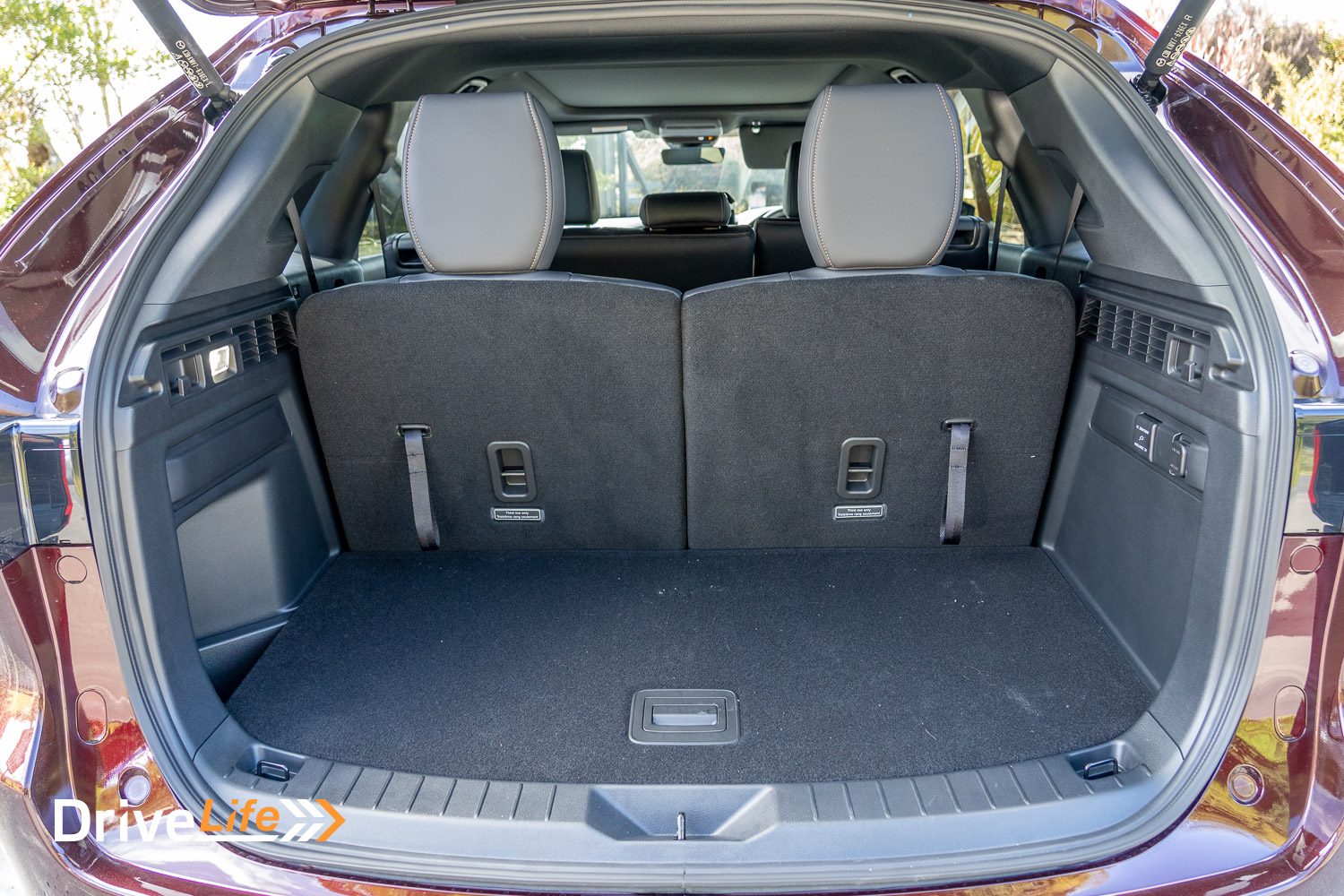
Getting into the car – which was finished in a stunning Artisan Red – the first impression is the width of the cabin; it’s extremely wide, with the centre console reminding me of the Chev Silverado.
I hooked up my phone to the car’s infotainment system. My only disappointment for the day would be that Mazda hasn’t moved to a touchscreen, so everything is still managed by the jog dial on the centre console. This is not bad, but a touchscreen for when you are not moving is easier. Still, as I say, that would be my only complaint for the day.
One thing I was very happy about is that Mazda has retained physical controls for all AC and seat heat/cool functions. These are a row of buttons on the dash, exactly where they should be. You cannot change any AC settings on the screen, and that’s the way it should be.
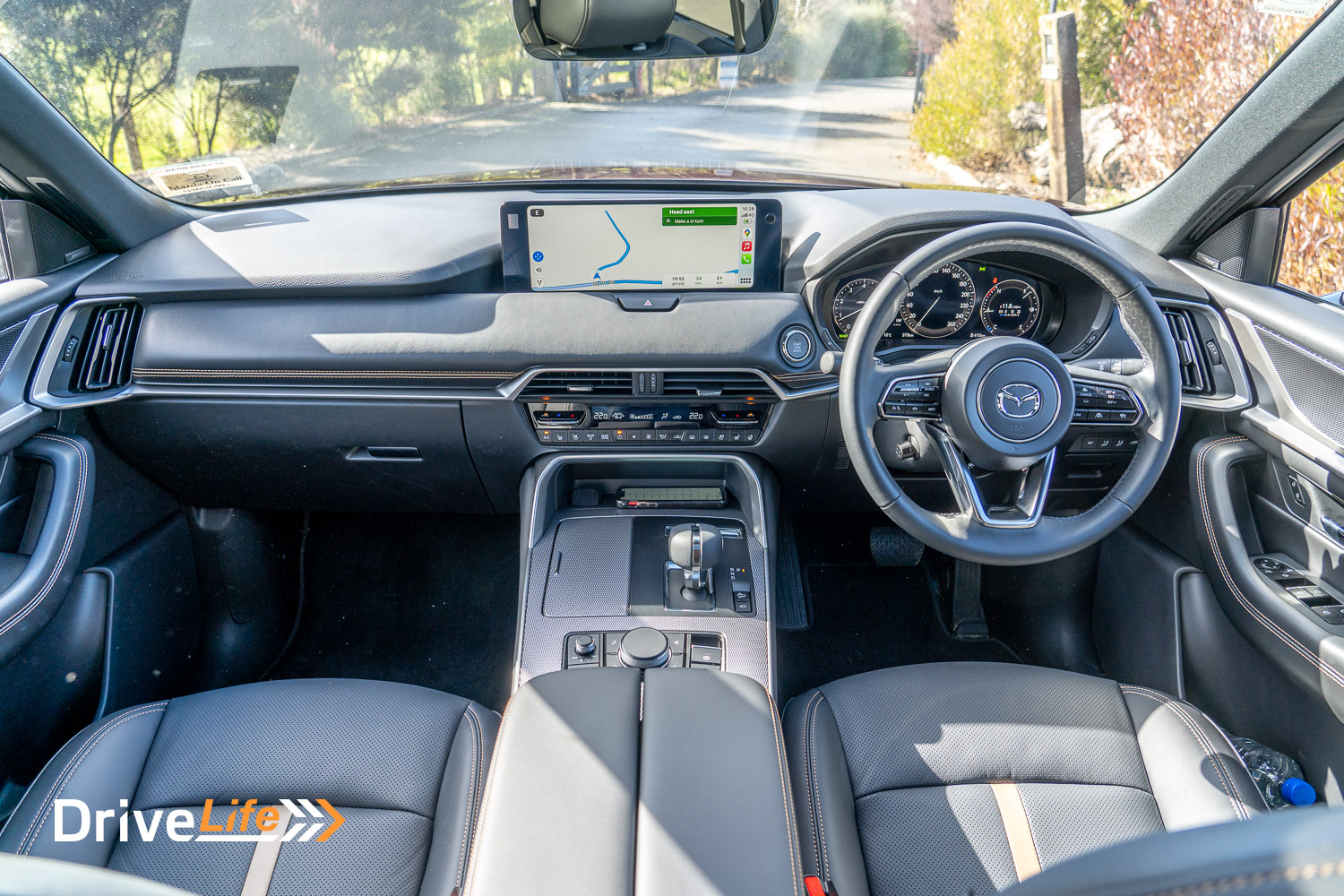
Any Homura or Takami model has an electrically adjustable steering wheel, something I feel is a first for Mazda. I told the car my height, and Mazda’s Driver Personalisation System moved the seat, steering wheel and mirrors for height. It’s surprisingly accurate and also has a face recognition feature, so you simply need to get into the car and if the seat etc has been moved, the car will set them up for you automatically.
Looking around the cabin, there is Mazda’s usual build quality which is to say, excellent. Being a Takami, it’s all extremely luxurious in the cabin, with contrasting stitching on the seats settings things off nicely.
Time to hit the road, and experience that all-new 6-cylinder engine. As expected, it’s incredibly smooth and reminds me of a 2.8-litre Mercedes-Benz twin cam. At speed and under gentle throttle openings, there is no engine noise, but go to pass another car and it will give you a nice growl to remind you it’s a straight six. Mazda New Zealand says there are no fake engine noises going on with this motor, so it’s all-natural.
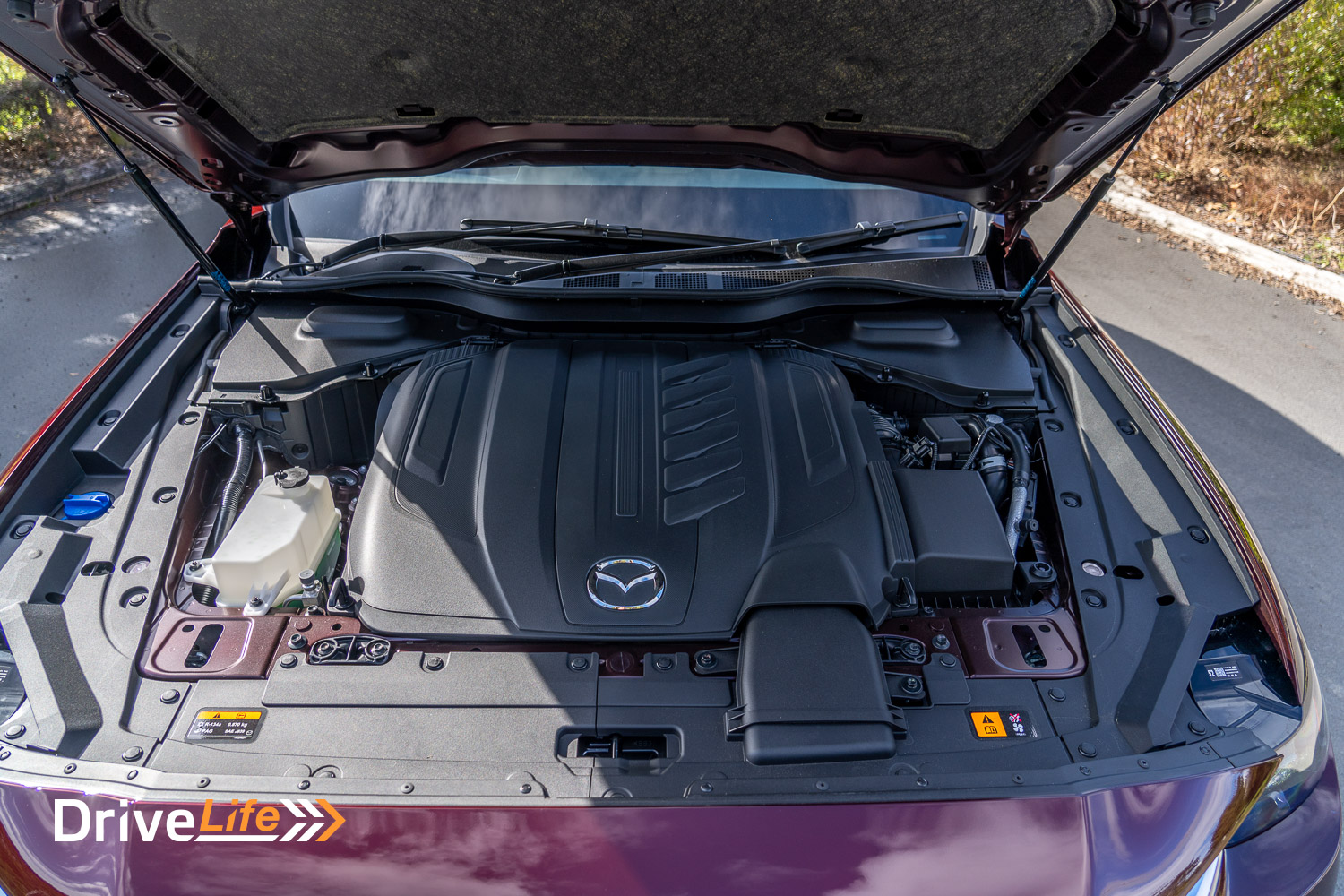
I was surprised to see that Mazda NZ had given us a route full of twisty corners, heading to Clevedon and then on to Hunua. On those very windy roads, you can certainly feel the CX-90’s weight and height, but it feels very stable and sits on the corners well. Bumpy bends do not upset the car at all. Performance with 254kW is spirited, and slipping the car into Sport mode will see it hold gears longer and accelerate harder.
Handling capabilities aside, it’s still that engine that impresses. It’s like a turbine, the way it sounds and the way it delivers its power. Fantastic engine. The ride quality in the CX-90 Takami also impresses, it’s very smooth over nearly all bumps I came across, that 2.2 ton pounding the bumps away.
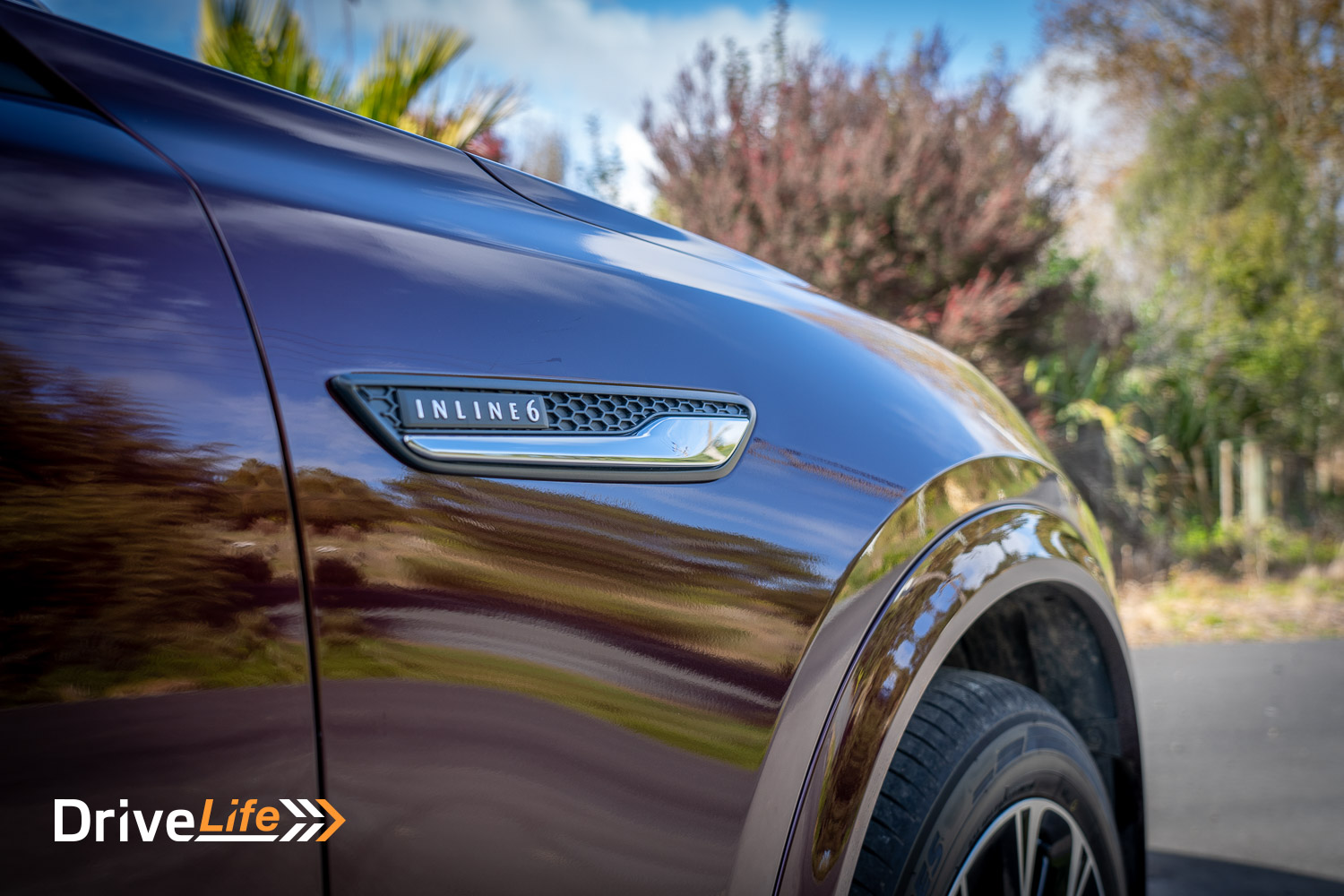
Next up it’s into the CX-60 Homura with the same 3.3-litre engine. I would not have time to get behind the wheel of the PHEV version today, but we have booked one in for review.
I think the most surprising instant reaction was the width of the cabin – it feels exactly the same as the CX-90 and I was not expecting that at all. Other than it being shorter, you could be in either car. Well, the size and the 7 vs. 5 seats of course.
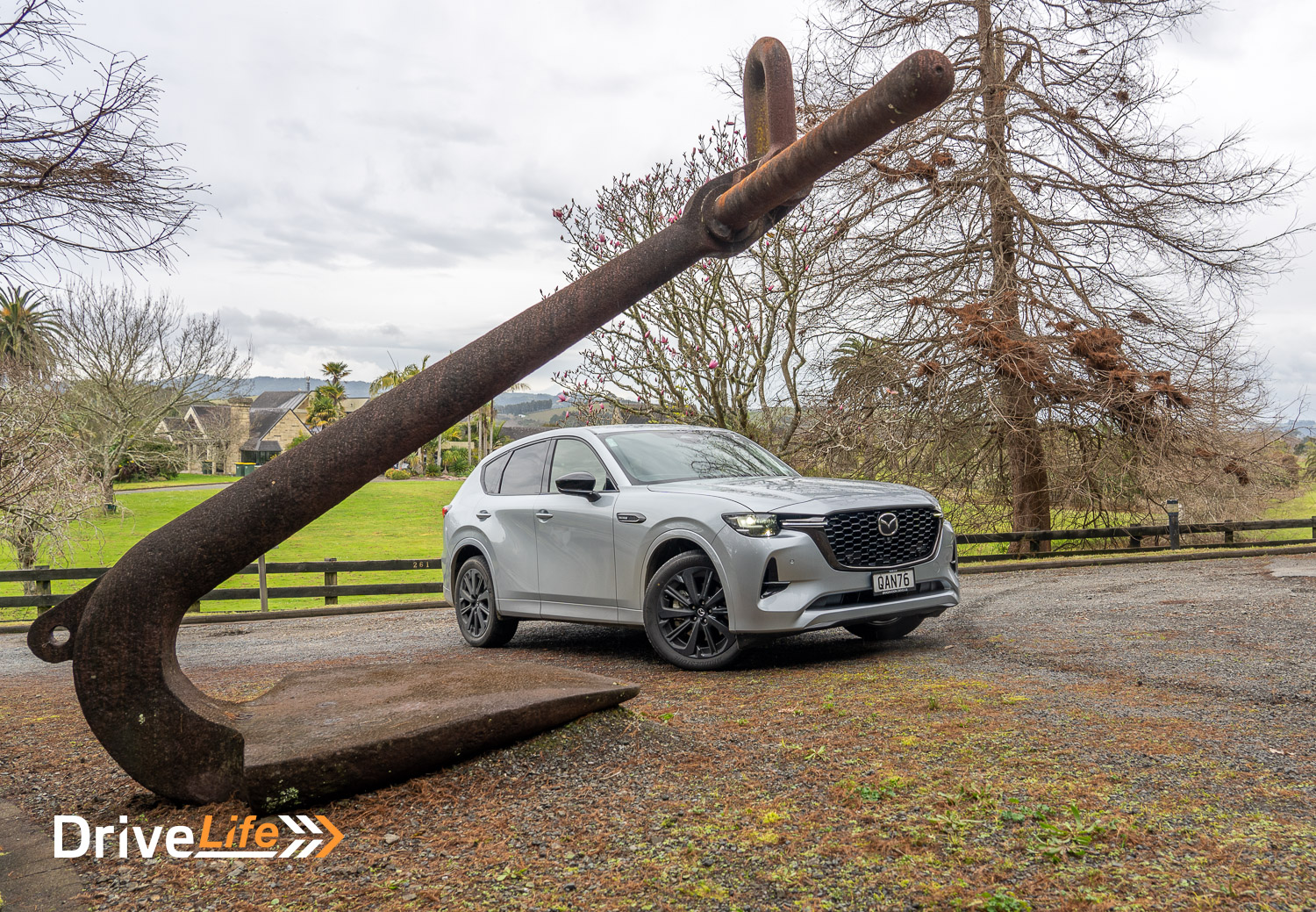
With less weight and a detuned version of the same engine, performance feels about the same as the CX-90. The ride isn’t as good, however, perhaps that 250kg weight saving over the CX-90 has meant a ride that is still very good, but not as good as its bigger brother. The handling is better though; with less weight and shorter overhangs, the CX-60 is more agile in the corners than the CX-90. It’s noticeable to me, but only because I drove them back to back. The CX-90 still does very well for its size and weight.
Day over, it was time to head home and reflect on the new CX-60 and CX-90 from Mazda. Brave move, introducing a new inline-six? Definitely. Have they pulled it off? Definitely. While it was barely a day with the new models, they are even better than the other models in the Mazda stable of cars, and that’s saying something.
First impressions are great; the new Mazda CX-60 and CX-90 may well be SUVs that will become the benchmark of excellence.



